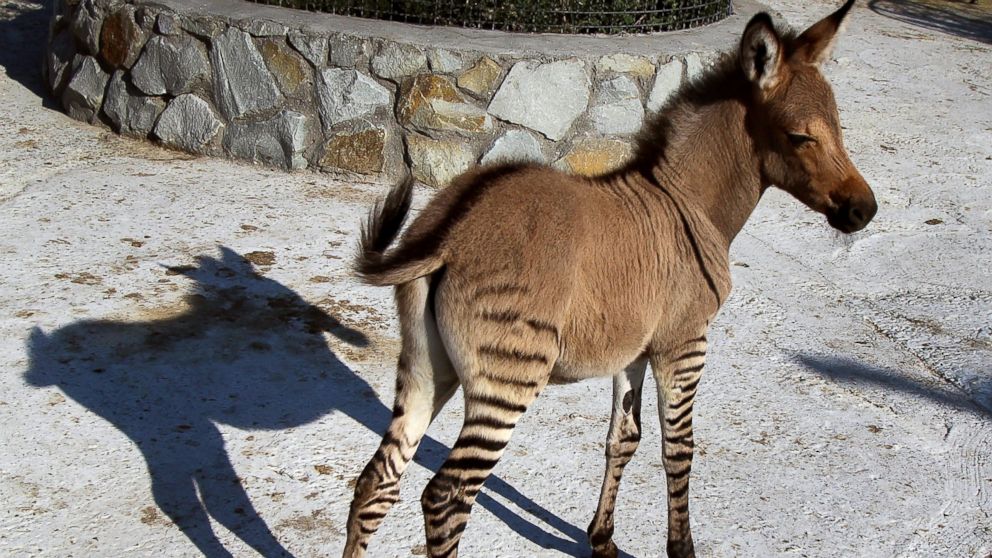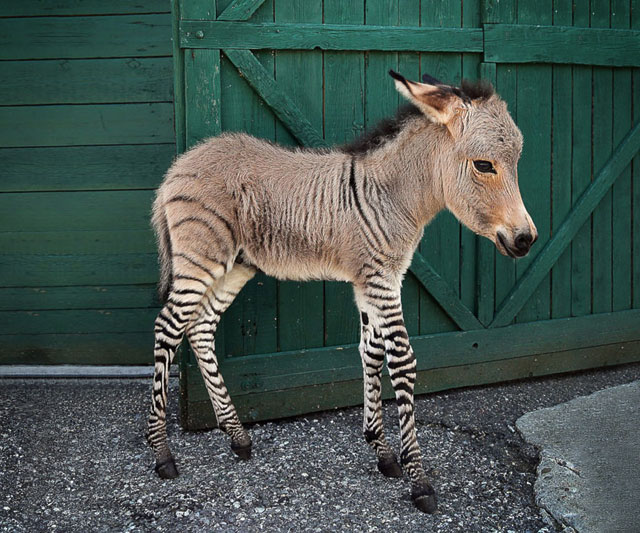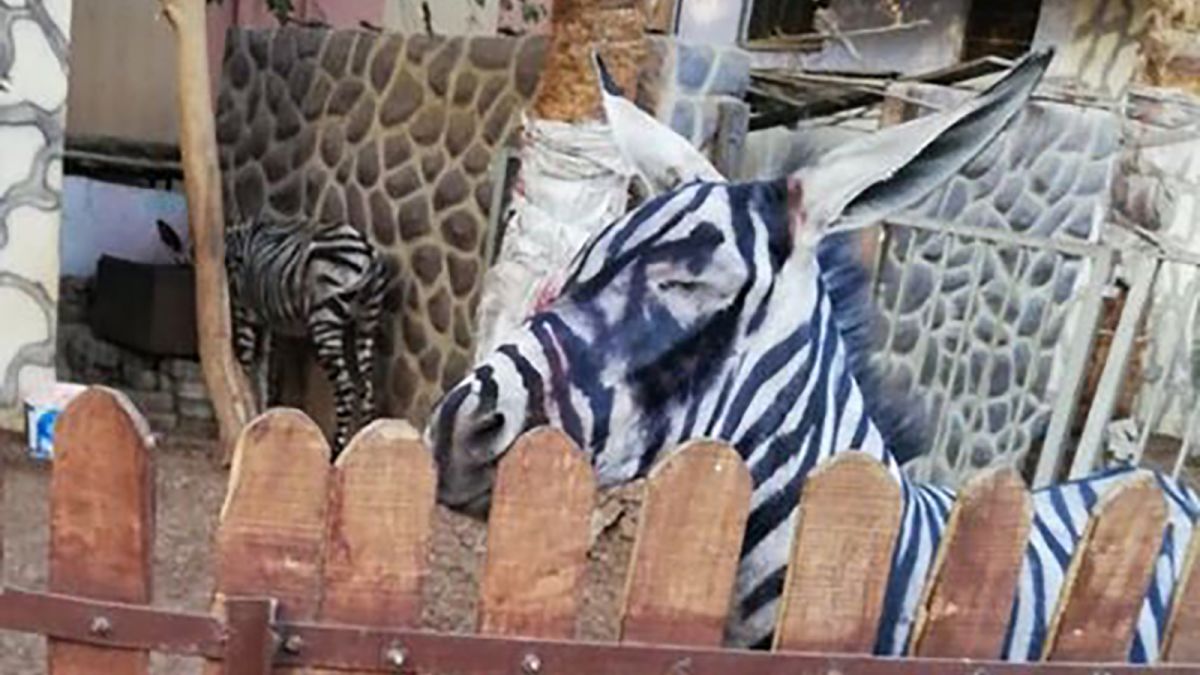A zebra is not a donkey. They are related but belong to different species.
Zebras and donkeys are both members of the Equidae family. Zebras are native to Africa, recognized by their distinctive black and white stripes. Donkeys, on the other hand, have a more uniform coat and are domesticated worldwide. While both animals share common ancestors, they exhibit different behaviors and adaptations.
Zebras are typically wild and live in herds, whereas donkeys are often used as working animals. Understanding these differences helps in appreciating the unique traits and roles of each species. Despite their similarities, zebras and donkeys serve distinct purposes in their respective environments.
Zebra And Donkey: Distinct Lineages
Zebras and donkeys may look similar, but they have distinct lineages. Each species has unique characteristics and genetic roots. Understanding these differences helps us appreciate their diversity.
Genetic Roots Of Zebras
Zebras belong to the Equidae family, sharing this group with horses. Their genetic roots trace back to Africa, where they evolved. Zebras have unique black and white stripes. These stripes are their most distinguishing feature.
There are three main species of zebras:
- Plains Zebra
- Mountain Zebra
- Grévy’s Zebra
Each zebra species has different stripe patterns. Scientists believe these patterns help with camouflage and social bonding.
Evolutionary Path Of Donkeys
Donkeys also belong to the Equidae family but have a different evolutionary path. Donkeys originated from wild asses in Africa and Asia. Over time, they were domesticated for their strength and endurance.
Donkeys have a sturdy build and are known for their hardiness. They are often used as working animals due to their ability to carry heavy loads. Unlike zebras, donkeys have solid coats that can be gray, brown, or black.
Here are some key differences between zebras and donkeys:
| Characteristic | Zebra | Donkey |
|---|---|---|
| Stripes | Black and white | None |
| Origin | Africa | Africa and Asia |
| Domestication | Wild | Domesticated |
| Use | Wildlife | Work animal |
Physical Characteristics: Stripes Vs. Solid Coats
Is a zebra a donkey? No. They are different animals. One major difference is their physical characteristics. Zebras have stripes. Donkeys have solid coats. Let’s explore these traits further.
Unique Zebra Stripes
Zebras are known for their unique stripes. Each zebra has a different pattern. These stripes help zebras in the wild. They provide camouflage in tall grass. Stripes also confuse predators. Zebras have black and white stripes. This makes them easy to spot in a herd.
| Feature | Zebra |
|---|---|
| Coat Pattern | Stripes |
| Color | Black and White |
Donkey’s Subdued Hues
Donkeys have solid coats. They come in many colors. Common colors include gray, brown, and black. Donkeys do not have stripes. Their coat is usually one solid color. This makes them different from zebras.
| Feature | Donkey |
|---|---|
| Coat Pattern | Solid |
| Color | Gray, Brown, Black |
Both zebras and donkeys are unique. Zebras have stripes. Donkeys have solid coats. These differences make them easy to tell apart.
Behavioral Traits: Social Structure And Habitat
Understanding the behavioral traits of zebras and donkeys is key to differentiating them. Their social structures and habitats are vastly different. These differences shape their behaviors and lifestyles.
Zebras In The Wild
Zebras are highly social animals. They live in groups called herds. A typical herd consists of one stallion, several mares, and their foals. This structure helps them stay safe from predators.
Zebras communicate through vocal sounds, body movements, and facial expressions. They have excellent hearing and sight, which aids in detecting threats. Zebras are always on alert for predators like lions and hyenas.
Habitat is crucial for zebras. They thrive in grasslands, savannas, and open woodlands. These areas provide ample grazing opportunities. Zebras move in search of food and water, sometimes covering vast distances.
Donkeys’ Domesticated Lifestyle
Donkeys have a different social structure compared to zebras. They are often found alone or in small groups. Domesticated donkeys are used for carrying loads and performing farm tasks.
Donkeys communicate using brays, snorts, and other vocalizations. They have a strong sense of curiosity and intelligence. This makes them excellent problem-solvers.
Habitat for donkeys varies. They can adapt to various environments. These include deserts, mountains, and even farms. Domesticated donkeys live in stables or barns. They require less space compared to zebras.

Credit: abcnews.go.com
Hybrid Offspring: The Zonkey Phenomenon
Have you heard about the zonkey? It’s a rare hybrid animal. This unique creature is the offspring of a zebra and a donkey. Zonkeys are fascinating because they combine traits from both parents. Let’s explore how they come to be.
Breeding Zebras And Donkeys
Breeding a zebra and a donkey is no easy task. Zebras and donkeys don’t usually mate in the wild. Breeders must bring them together in a controlled environment. The process requires patience and care.
Zebras have different chromosomes than donkeys. Zebras have 44 chromosomes, while donkeys have 62. Despite this difference, they can still produce a hybrid offspring. This rare event makes zonkeys very special.
Characteristics Of Zonkeys
Zonkeys inherit traits from both parents. They often have striped legs and bodies like zebras. Their coat color can vary, showing a mix of zebra stripes and donkey fur. Zonkeys are usually sterile, meaning they can’t have babies.
- Appearance: Striped legs, mix of fur colors.
- Size: Similar to donkeys, but can be slightly larger.
- Behavior: Zonkeys can be stubborn like donkeys.
- Lifespan: Similar to their parents, around 20-30 years.
Zonkeys are unique and fascinating animals. They show the incredible diversity of nature. Their rare existence highlights the wonders of animal genetics.
Conservation Status: Protecting Equine Diversity
Equine diversity includes fascinating creatures like zebras and donkeys. Both face unique conservation challenges. Ensuring their survival is crucial for maintaining biodiversity. This section explores threats and conservation efforts for these animals.
Threats To Zebra Populations
Zebra populations face several threats, affecting their survival. Key threats include:
- Habitat Loss: Urbanization and agriculture reduce zebra habitats.
- Poaching: Zebras are hunted for their skins and meat.
- Climate Change: Changing weather patterns disrupt food and water sources.
- Human-Wildlife Conflict: Zebras compete with livestock for resources.
Conservationists work tirelessly to protect zebra habitats. They also implement anti-poaching measures and promote coexistence between humans and wildlife.
Donkey Welfare And Conservation Efforts
Donkeys also require attention for their welfare and conservation. Key points include:
- Overworking: Donkeys are often overworked in rural areas.
- Neglect: Lack of proper care leads to health issues.
- Habitat Degradation: Loss of natural habitats affects wild donkey populations.
Several organizations focus on improving donkey welfare. They provide veterinary care and educate owners on proper treatment. Conservationists also work to protect wild donkey habitats.
| Threat | Zebra | Donkey |
|---|---|---|
| Habitat Loss | High | Moderate |
| Poaching | High | Low |
| Overworking | Low | High |
| Neglect | Low | High |
Protecting equine diversity is vital. Both zebras and donkeys need our help. By addressing threats and promoting welfare, we can ensure their survival.

Credit: www.boredpanda.com

Credit: www.cnn.com
Conclusion
While zebras and donkeys share similarities, they are distinct species. Zebras have unique stripes and wild behaviors. Donkeys are domesticated with different physical features. Understanding these differences helps appreciate each animal’s uniqueness. Keep exploring the animal kingdom to discover more fascinating facts.
